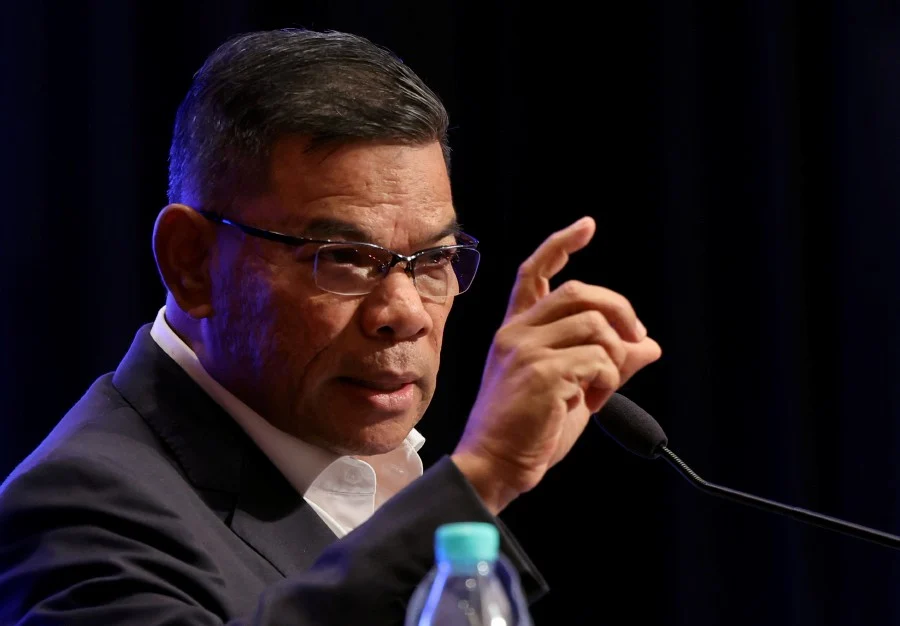By Neil Foo
INFECTIOUS diseases continue to plague us at short intervals, from the atypical pneumonia SARS and H1N1 Influenza to the novel coronavirus (Covid-19).
Hence, anyone who coughs or sneezes will arouse criticisms from those near them, as no one dares to let their guard down these days.
People start to be more concerned about their health, they start to feel afraid, and even terrified. Three women started a fight in a supermarket over toilet paper in Sydney, Australia after the coronavirus outbreak.
At this moment, even the way to wash our hands has started to be taught or taught again. Isn’t something like this learned in Primary 1? Shouldn’t everyone have known about this?
As a man, I have my rights to observe legally, logically and reasonably the habits of using the toilet that seem simple. To my surprise, there is a small group of people who do not wash their hands after using the toilet!
You would’ve felt disgusted if such a person shook your hand after using the washroom!
Hence, television is teaching us how to wash hands for at this critical moment, it is not something unimportant anymore.
What is sub-health?
Sub-health is a borderline state between healthy and sick. Although this means that you are not sick, you actually do not feel well.
According to a worldwide survey by the World Health Organisation (WHO), a majority of us are classified under the sub-health condition, with a minority suffering from illnesses and just a very small percentage who are healthy.
Based on the WHO study, 95% of the population of the world are in an unhealthy condition. Of this group, 20% are ill, and 75% are sub-healthy (where the body starts to decline, leading to diseases if it is not taken seriously). That leaves only 5% of the people who are considered healthy.
The reasons for the unhealthy population may be due to the exponential growth of the global population that has led to high-density living conditions in urban areas. This 70% urbanisation trend and globalization of human movements are factors for the easy spread of disease. This is compounded by the hectic lifestyle that results in imbalanced diets. Then there is food and environmental contamination and pollution.
Global health expenditure per capita continues to grow rapidly and is predicted to reach RM7,716.97 this year while the total worth of health industries globally is predicted to reach up to RM55 tril!
The future of healthcare and wellness sectors
The healthcare industry being one of the largest industries of the world, has a total health expenditure of around 10% of the total gross written premium (GWP) yearly, and is the new motivation for the world’s economic development.
The comprehensive health issue is a global issue, which follows the increase of its crisis awareness and necessities, leading to a rapid growth in the comprehensive health industry.
Healthcare industry related products and services include:
- Healthcare services
- Medical supplies
- Health supplements
- Medical equipment
- Leisure, health and wellness services
- Health information consultation, etc
The healthcare industry chain can be divided into:
- Content
- Healthcare production (produce and operate)
- Healthcare services (providing services) i.e. medical and health care, leisure and health care, residential work
- Structure
- Core: Medical care, supplements, medical equipment
- Mezzanine: Physiotherapy, tourism and vacation, consultation and training
- Supporting: F&B, hotels, real estate, offices, wholesale, retail, logistics
The driving forces of the proliferation of the healthcare industry are:
- Globalisation
- Ageing population, sub-healthy state, climate and environmental changes
- The more frequent spread of contagious diseases
- Technological development such as 5G and Artificial Intelligence (AI)
- Medical health systems with low costs and high efficiencies
- Surplus of real estate causing developers to embrace the healthcare element as a marketing strategy
Now, when we discuss health, we’re actually talking about wellness.
Wellness has overtaken health as the pursuit of physical, emotional, social, environmental, and spiritual well-being. The search for wellness has created a massive industry that has become known as the wellness economy.
Global wellness trends
- Ageing rejuvenation – The new age starts from the 50s with many creative wellness solutions. It’s a powerful and affordable demographic with major marketing potential.
- Sleep quality focus -This will become a central pillar of wellness – to sleep well to prevent sub-healthy lifestyle diseases. Therapies, devices, circadian lighting to improve the sleep quality of the modern world.
- Mental wellness – Mental tech health, AI chatbots and other futuristic innovations are moving mainstream to support the 450 million individuals currently struggling with this issue.
- The wellness of balance – A balanced diet, and balance of work and life.The content of the creative balance programme is the central concept.
- The co-fertility and maternity sharing boom – A new generation to apprehend the quality of their reproductive health. Reproductive assistance, once deemed a luxury, is becoming a chase for new healthcare service.
- Meat substitute – Vegan products offer many health benefits and are significantly more sustainable than meat.
- Electromagnetic energy wellness – The potential of electromagnetic, light and sound interventions to heal the human “energy body”.
- Wellness with religious elements – Religious elements are embraced and incorporated into a wide range of physical and mental health and fitness regimes.
Convenience is the key to the development of the wellness industry. Accessible, easy to navigate, time-saving. Taking convenience a step further, consumers expect almost everything to be on-demand.
First, there was fast food and now, those expectations have extended to grocery delivery. But for today’s wellness consumer, there’s more to be gained.
Imagine a B2B central kitchen extending its service to B2C by delivering healthy food to household consumers under a wellness programme. That will be interesting!
Even things that are inherently inconvenient like making time for exercise, meditation, or a spa day will be stripped down, repackaged, and served to us in a more convenient form.
Accessed online, via an app, or facetime connected equipment kind of content will continue to fuel the wellness economy.
With the Covid-19 pandemic threatening us, we will see people around the world getting more health conscious and more caring for the environment. The globe is expecting the proliferation of healthcare and wellness after the pandemic! – April 15, 2020
Neil Foo is the Malaysian representative of APEC SME Forum









